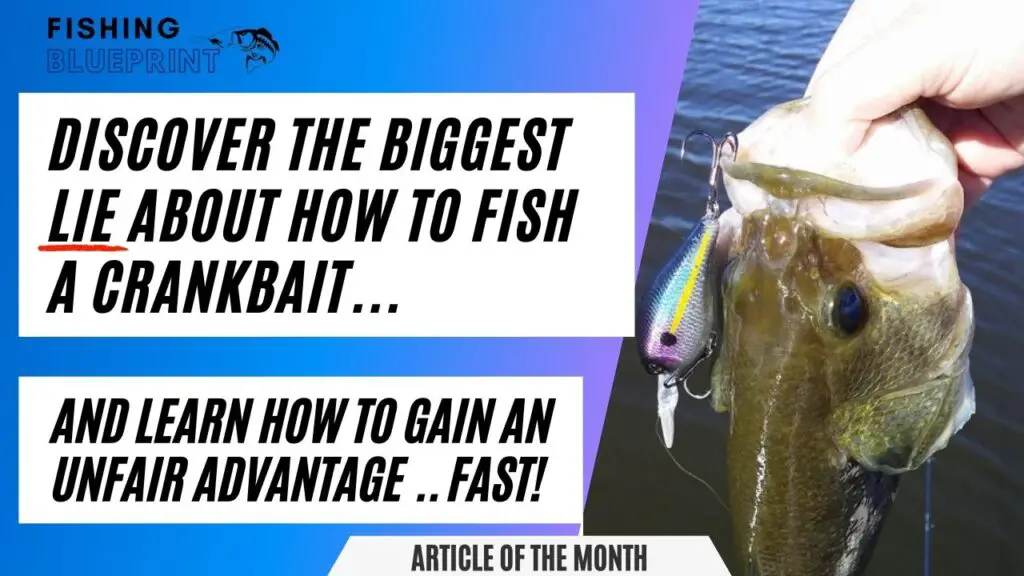Lake Almanor Fishing Report
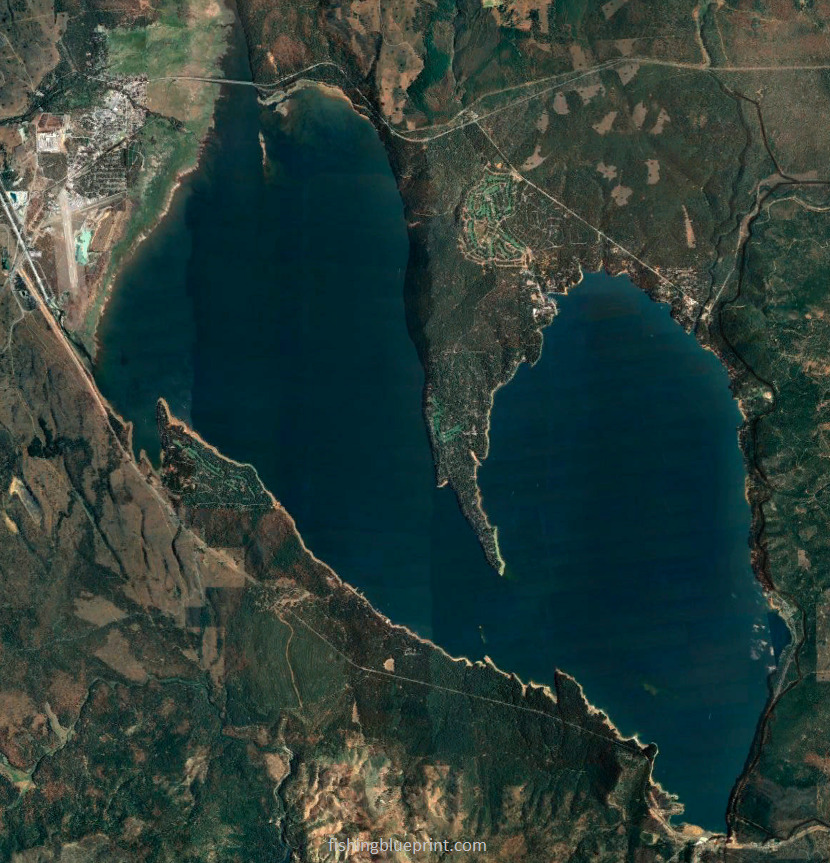
Lake Almanor is a large lake that sits 240 miles away from San Francisco, or 547 miles away from Los Angeles.
Overall it’s a very popular lake and in this post you’re going to be given the blueprint to fish this lake.
So what are the best tips for fishing Lake Almanor? There are three important factors you must know if you want to know how to fish Lake Almanor successfully. First, you need to know what kind of fish is in Lake Almanor. Second, it’s important for you to know which part of the lake each species can be found. Lastly, knowing what are the best baits that work on Lake Almanor is vital. However, tactics, baits, and locations will be different for each type of fish that you target. So let’s talk about the steps you need to take in order to give you the best chance of catching a fish on Lake Almanor.
Key Takeaways
This lake gives locals and visitors the opportunity to test their luck in catching one of the many game species this lake has to offer, such as salmon, trout, bass, catfish, bluegill, and much, much more!
Here’s the most recent and updated Lake Almanor Fishing Report – it gives you a quick and easy list of some really good fishing spots. If you’re looking for more detail on how to fish each spot scroll down into the article.
- New West Flats
- Almanor Peninsula
- Goose Island
- Dakatsu Islands
- Eastern Shoreline
- Canyon Dam
Here are some additional fast and helpful tips just for you:
- The easiest way to fish this lake is by boat, but there are areas to fish from the bank, or by kayak or float tube.
- There are public boat ramps to use.
- Camping and RV parking is available.
- You can buy tackle and some snacks at Ayoob’s Intermountain Hardware in Chester, or Sierra’s Fly & Tackle @ the Branch on the Northeast Shore
About Lake Almanor
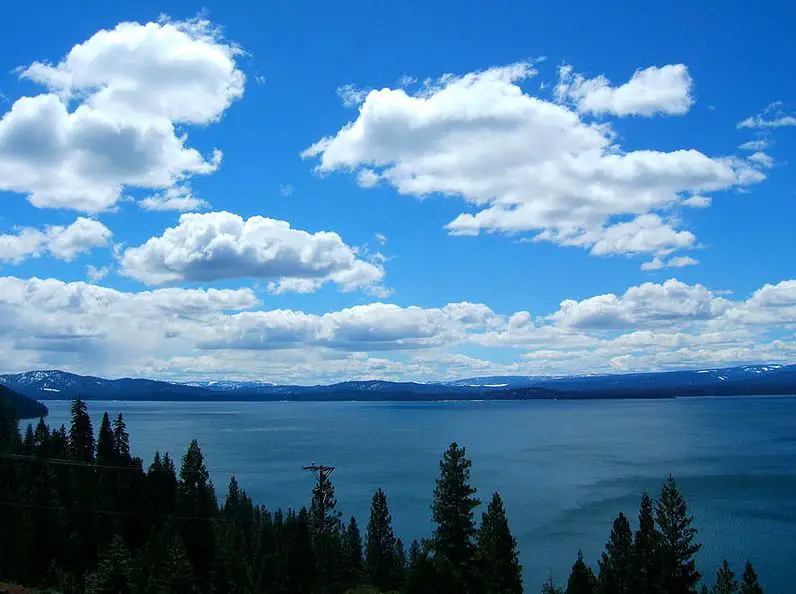
Lake Almanor is a moderately deep body of water with the average depth being 30-50 feet and a maximum depth of 90 feet when the lake is completely full. Fishing Lake Almanor can be incredible when you have over 52 miles of shoreline to fish. Being 13 miles long and 6 miles across this plays a vital role in hydroelectricity production.
Lake Almanor is known to be one of the better fisheries for trout especially when trolling for trout. And in the late June and early July the lake has one of the biggest insect hatches in the area, so fly fisherman love to frequent this lake. On top of some great trout fishing this lake grows some giant bass as well.
Lake Almanor gives locals and visitors the opportunity to test their luck in catching one of the many game species this lake has to offer.
Important Lake Warnings
Algae blooms may be present which may affect fishing, swimming, and water contact in general.
According to parks.ca.gov, “every one of California’s new laws requires boat operators to have a California Boating Card. The card is required for anyone under the age of 41 to operate a boat in California’s waters.”
If you are fishing and camping, fire bans may be in effect due to the ongoing drought conditions.
What Kind Of Fish Are In Lake Almanor
- Rainbow trout
- Brown trout
- Chinook salmon
- Largemouth bass
- Smallmouth bass
- Crappie
- Catfish
- Bluegill
Lake Almanor Fishing Tips & General Strategies
Another picture of the lake or find a YT video
It can be a challenge to break down Almanor and decide to get started.
Water clarity
This lake’s water clarity can be nearly gin clear, with clarity ranging 12 to 20 feet. At 50 to 100 feet, the thermocline forms in the summer, and lake turn over happens late in the fall.
Lake sections
The lake can be broken down into three primary sections. The main lake dam, Lake Almanor West, and Lake Almanor East.
There are smaller coves and creeks that are featured on this lake however, the majority of fishing will be in one of those general locations.
Primary species…
Lake Almanor is known to offer amazing King (Chinook) Salmon and trout fishing in the state. And you can test your luck by finding these beautiful fish suspended over deep water primarily by the dam.
Many anglers say the best time to fish for king salmon is in the middle to late spring.
There is a common saying on this lake that if you want to catch a king salmon then you need to find the thermocline first, then the bait – the salmon will be close by.
The primary baitfish is the Japanese Pond Smelt found in Lake Oroville and Almanor Lake. These tend to be more of a shallow baitfish, can create gigantic bait balls, and sometimes will school in the size of a basketball court during the summer!
Big rainbow trout and brown also inhabit Almanor Lake. They can be found near the dam and over deep water on the eastern shoreline.
Even though there are trophy-size brown trout in this lake as well, stay patient because they are very hard to catch even for experienced fishermen.
When the water cools especially during the fall and winter brown trout are the easiest to be caught. Trout anglers have been known to catch them in the early to mid-fall when they run up the river to spawn.
These trout also suspend around the thermocline, so it’s not uncommon to catch both species of fish on the same day while fishing in the same location.
Bass are also in this lake…
Largemouth bass are the primary species of bass in this lake, followed by smallmouth bass.
Bass in this lake can be found and caught in these forms of cover: ledges and large rock piles facing north, rocky points that extend from the shore line down to the bottom of the lake, submerged or shallow grass near deep water or creek channel/ ditch, main lake humps, tree stump fieldss, road beds, marinas and docks.
Most of the fish such as bass, bluegill, crappie, and catfish will spawn in the spring.
Largemouth bass will spawn most commonly in the backs of coves where vegetation and gravel meet, normally in 1 to 8 feet of water on rocky structure, gravel flats, humps, and small creek inlets and cuts. . Whereas, smallmouth bass prefer deeper rocky points and banks 5 to 15 feet deep.
If you can find the ideal spot at the ideal depth then it will most likely assist you in catching fish.
Springtime Fishing update
Reports have been coming in for Lake Almanor. This in spring was like a breath of fresh air for many anglers itching to cast their lines. Here’s the scoop on the weather that was typically expected during this season:
Air Temperature: Air temps have been averaging ~50°F to 70°F. Many anglers jumped at the chance and grabbed their fishing gear and soaked up the sunshine!
Wind Speed & Direction: Gusty breezes have been common, with wind speeds ~5 to 15 mph from the southwest.
Variable Conditions: Expecting the unexpected has been the norm! Spring fishin’ at Lake Almanor has been a mixed bag with occasional rain showers or even late-season snow!
Trout and salmon typically spawn in the nearby tributaries, but will take back out to deeper water after spawning.
After spawning in Lake Almanor, trout and salmon typically seek out specific locations to rest and feed. Here’s where you might have found them:
- Hamilton Branch: A popular spot for anglers recently. This area is known to the locals and guides for its nutrient-rich waters that attracts both trout and salmon post-spawn. Focus your time on the river inlet for some excellent fishing opportunities.
- East Shore: The East Shore, particularly near the Dorothy Narrows and Rocky Point Campground, are prime fishing spots. In these locations, trout and salmon were often found recuperating and can be found suspending after the exhausting spawning process.
- Big Springs Cove: Located in the southeastern part of the lake. The cove’s shallow waters, near deep water, creates a haven for trout and salmon alike.
- Canyon Dam: The area around the Canyon Dam, especially near the Almanor Recreation Trail area is another good location. The mix of deep waters and nearby structure provided ideal conditions for the fish to recover and fatten up for the summer.
Lake Almanor – Summer Fishing update
Reports for Lake A have been blowing up! Anglers on the chat boards have been talking about how good the fishing has been.
Weather Patterns
Air Temperature: Temps have been ranging from 70°F to 85°F, occasionally reaching the 90s. Stay cool with sunscreen and a hat.
Wind: Lake Almanor’s summer wind speeds range from 5 to 10 mph. Anglers might find ideal fishing sites due to southwest winds.
Thunderstorms: Summer has been bringing afternoon thunderstorms. Watch the skies and be ready to take cover, especially if there is lightning.
Summer water temperature
The water temperature has been excellent for fishing, ~65–70°F. Warm waters make fish super active, giving anglers some really good days on the water
Trout, Salmon, and Bass Forage
The trout have been eating mayflies, caddisflies, and midges. They also target pond smelt, minnows and even young kokanee salmon.
Smallmouth and largemouth bass feed opportunistically. They hunt pond smelt, crayfish, and insects in summer. When available, bass eat kokanee salmon and juvenile trout.
Summer Fishing Techniques for Trout and King Salmon at Lake Almanor
We compiled a list of helpful tips for you to utilize when you’re here.
- Trolling: Trolling with downriggers at different depths helps have been catching both trout and king salmon. Adjust your speed and depth according to fish activity and location. For the best results, troll 1 – 1.5 mph and stager your lures at a different depths of 5 – 10 feet part.
- Jigging: Vertical jigging with tiny spoons, artificial trout worms, or Powerbait just above the trout and king salmon in deeper waters also has been working well.
- Fly Fishing: As you knee fly fishing for trout with with imitations of local insects, like mayflies and caddisflies, have been working really well for shoreline anglers in the morning.
Top 5 Baits for Trout and King Salmon
- Berkley PowerBait: Effective for trout, especially when using dough or floating eggs.
- Rapala Original Floating Minnow: A classic lure that imitates minnows, attracting both trout and salmon.
- Luhr-Jensen Needlefish Spoon: A popular choice for trolling, this spoon appeals to trout and king salmon alike.
- Yakima Bait Flatfish: A versatile lure that can be trolled or cast to attract trout and salmon.
- Blue Fox Vibrax Spinner: This spinner is great for both trout and king salmon, with its flash and vibration drawing attention.
Top 3 Locations for Trout and King Salmon
- Hamilton Branch: This is a well-known hotspot. It’s right outside the river inlet is a favorite among anglers. It’s best to fish this area in the middle of the week.
- Big Springs Cove: Located in the southeastern part of the lake, Big Springs Cove offers prime fishing opportunities for both species.
- Canyon Dam: Near the Almanor Recreation Trail, the Canyon Dam area provides deep waters and structure that attracts trout and king salmon.
Summer Bass Fishing Techniques at Lake Almanor
- Topwater Fishing: Use topwater lures like poppers or buzzbaits to entice bass in the early mornings and evenings.
- Crankbaits: Cover water quickly and easily to target bass at various depths. Work best around rocks, boulders, humps, and ledges.
- Spinnerbaits: Fan-cast spinnerbaits around weed beds, submerged timber, or rocky points to attract active bass. Work best in windy conditions.
- Drop-shot: Best used in calm conditions, deeper water, or when bass are less active, use a drop-shot rig with soft plastics for a finesse approach.
- Ned Rig: Great technique in cold or calm conditions. Jighead with Z-Man TRD soft plastic
- Wacky Rig: Hook with O-ring and soft stickbait, like a Senko
Reaction Baits for Bass
- Heddon Super Spook
- Strike King KVD Square Bill Crankbait
- Booyah Pond Magic Spinnerbait
- Rapala X-Rap Jerkbait
- River2Sea Whopper Plopper topwater lure
- Bill Lewis Rat-L-Trap lipless crankbait
Finesse Baits for Bass
- Gary Yamamoto Senko soft stickbait for weedless, Texas rig, or wacky rigs
- Roboworm Straight Tail Worm soft plastic for drop-shotting
- Zoom Trick Worm soft plastic worm for Texas rig, drop shot, or shaky head
- Z-Man TRD soft plastic worm for the Ned rig
- Zoom Baby Brush Hog creature bait for Texas rig, or Carolina rig presentations
Top 5 Locations for Largemouth and Smallmouth Bass
- Lake Cove: An excellent spot for both largies and smallies. It has a mix of rocks, brush, and weeds.
- Big Cove: Has lots of submerged brush piles and docks
- Recreation Area 1: Located right before the tip of the peninsula, it has a ton of docks, weed beds, and it’s close to deeper water.
- North West Flats: Huge area with channels and vegetation to target bass.
- Rocky Point and Dakatsu Islands: As the name suggests, this area has a mainlake rocky point, rocky ridges, rocky islands and ledges that attract big smallmouth bass.
But Where Are The Best Places To Fish At Lake Almanor?
And in no particular order here is that list of the best fishing spots at Lake Almanor.
DISCLAIMER: The material provided is for general information purposes only. It’s important to understand that any information provided in this article can change at any time. Any maps or graphics featured are not to be used as navigational aids. Fishing Blueprint will not be responsible for any personal injury or property damage from any misuse of the maps or graphics provided. It’s completely impossible to give you every single spot where you can potentially catch a fish. But, what this list does do is to give you a helping hand and narrow down to the most productive fishing spots.
North West Flats

The flats on the northwest section of the lake is often over looked, however in the late winter and early spring this area can offer absolutely amazing trout fishing.
During the summer, bass like to hunt in the submerged grass as well.
It’s a fairly large area that has very little change in depth and is covered in vegetation. Sometimes this vegetation can grow to the surface creating a floating mat or canopy.
For trout
Scan the edges of the grass lines with you fish finder and use slow trolling lures like inline spinners.
For the best results, troll 1.5 mph and stager your lures at a depth of subsurface, 5, and 10 feet deep in this area.
A fish attractor (ie: flasher or dodger), trolling spoons, inline spinners, Rapala minnows, Kwik Fish for the trout are aggressively feeding and will attack a fast moving lure, and great for trolling.
For bass
Fishing the deep pockets within the submerged vegetation can also frequently result in fish being caught. Fishing the outside edges can frequently result in fish being caught.
When the weeds are just developing or dying off, this huge flat fishes very well, creating deep channels in the vegetation. Bass will hide in weed-filled holes and ambush bait.
Holes should be fished with a grass flipping jig, wacky rig senko, Mojo rig, Texas rig, weedless tubes or even a drop shot.
If the grass is submerged you fish over the tops with a topwater lure, buzzbaits, frog lure, chatterbaits, or whopper plopper.
Fish the weedline edges parallel with crankbaits, lipless crankbaits, spinnerbaits, frog lures, soft plastic swimbaits, umbrella rigs, swim jigs, underspin jigs or chatterbaits.
There are several hard bottom patches, small rock piles, and high spots on humps that should be checked for fish.
Lastly, there are several small drainage ditches that should be checked for fish as well.
In the winter and spring, trout have been known to be caught cruising the outer weed edges.
Located: northwest section of the lake
Structural features: long rocky point dropping into deep water
Best species to target: salmon, trout, and bass
Most effective way to fish this spot: boat or kayak
Almanor Peninsula

This part of the lake is home to a single long rocky point that consists of hard bedrock structure. The size of the rock can range from small boulders to basketball-sized rock (also known as “riprap”). The tips or ends of these long rocky point will either drop off into deep water, or transition into smaller sizes or gravel.
The western side of the point is characteristically steep and the eastern side tapers more gradually with ridges and deep shelves.
Let’s take a closer look at the topographic map…
Look carefully at this topographic map…

As you can see, on the eastern side is filled with a ton of cuts, humps, and ridges.
The best this about this place is salmon, trout, and bass love this area.
But… the big difference is the salmon and trout will tend to hold over deeper/colder water, whereas the bass will be more shallow, especially during the summer.
What you can expect…
Crawfish, bluegill, minnows, and shad seek shelter in rocky substrate, which in turn attract bass.
It’s best to scan both sides of the point to see where the bait fish are relating to.
Most of the time there are cuts, piles of boulders, and other features that create a ‘point on the point’ often hold fish.
Furthermore, fishing the largest of boulders you can find in that area, as well as, the transition areas (areas that feature larger rock and turn into rocks of a smaller size).
Located: south lake pain point
Structural features: long rocky point dropping into deep water
Best species to target: salmon, trout, and bass
Most effective way to fish this spot: boat or kayak
Goose Island

This spot is great during the summer.
Bass will relate to the deep section of the point and trout will hold over the deep water.
Look carefully at this topographic map…

There is also submerged point that in front of Prattville. It starts as a shallow shelf that tapers into a long point then drops into deep water at the tip.
Lastly, check out the small hump in the lower half of the picture, it also will attract salmon, trout, and bass.
Structural features: large island, long point into deep water
Best species to target: rainbow trout, brown trout, salmon, and bass
Most effective way to fish this spot: Boat, kayak, and from shore
Dakatsu Islands

Lower section of this Lake consist of multiple rocky ridges that form into Highlands that extend out from the Rocky Point Campground. This area is very good for Chinook salmon, rainbow trout, and brown trout in the summer. Anglers often catch large smallmouth bass here as well.
The numerous rocky ridges, and ledges should be carefully graphed for bass waiting in ambush.
Look carefully at this topographic map…

Closer to shore there are numerous pockets, feeder creeks, and ditches that provide great habitat for fish.
Located: southeast end of the lake
Structural features: main lake ridge, humps, islands, deep water nearby
Best species to target: bass, trout, salmon
Most effective way to fish this spot: boat, kayak, or float tube
Eastern Shoreline

The eastern shoreline is incredibly steep and drops into 70+ feet of water which makes this an excellent place to troll for cold water fish like rainbow trout, brown trout, and king salmon.
Downriggers and drift socks aid in catching these trout that are suspended over deep water 80-150-feet deep during the late springtime all the way through late summertime.
Look carefully at this topographic map…

Located: eastern shoreline.
Structural features: Steep clay and rocky banks, deep channels and drop offs.
Best species to target: Trout and salmon
Most effective way to fish this spot: Boat or kayak Trolling with a downrigger, trolling without a downrigger
Canyon Dam
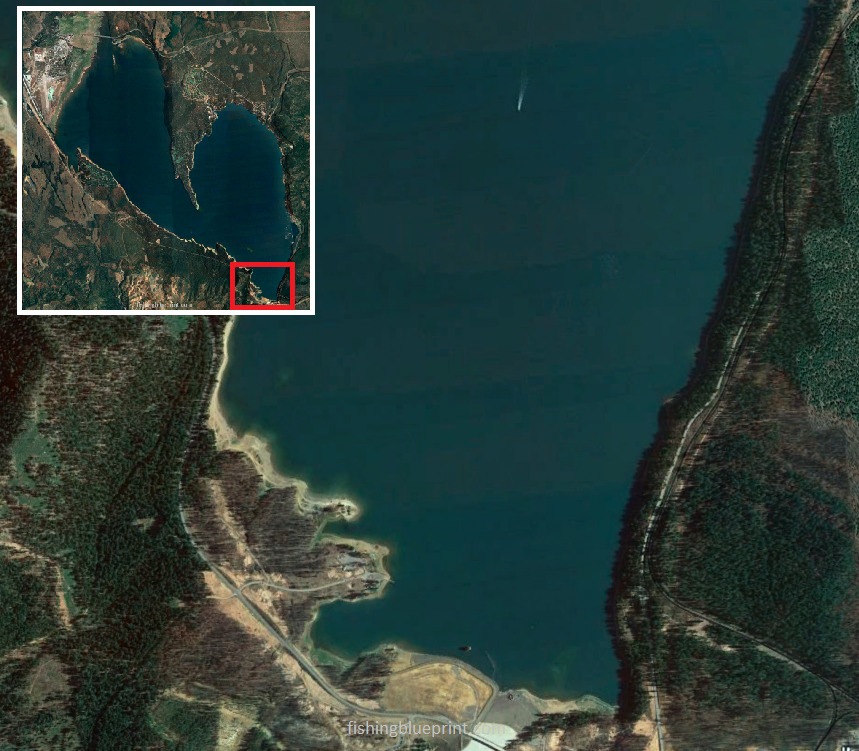
Fishing just outside of the dam can catch you an abundance of Chinook salmon, lake trout, rainbow trout, and even some brown trout.
Look carefully at this topographic map…
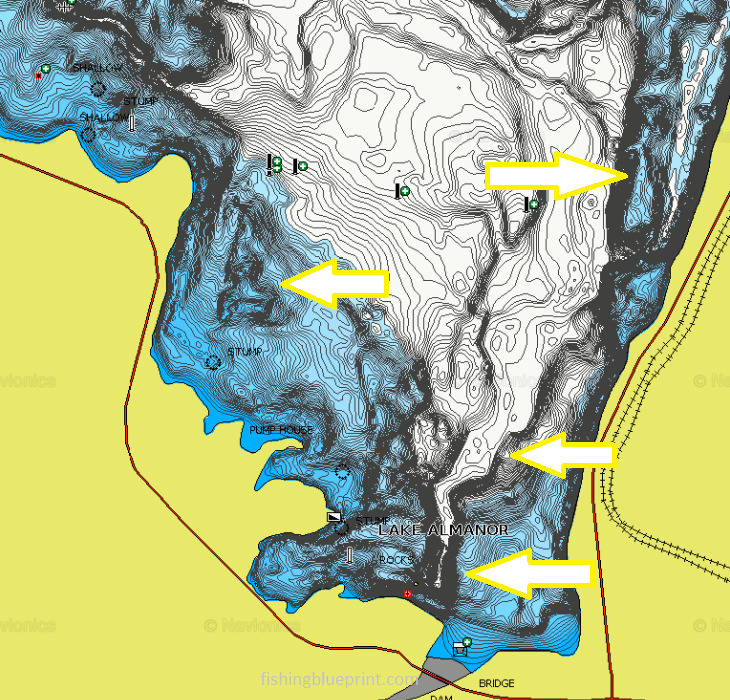
This area is reported to be great all year long, but even more so during the summer and early fall.
There was a TON of structure that the salmon, trout, and even bass would relate to, according to fellow anglers and guides.
They suggested making sure to graph over the humps, ridges, ledges, and deep water drop-offs, as those would give the best chances of finding salmon or trout.
If the water was low, they recommended graphing the cove just southwest of the dam, where one could possibly find bass and crappie suspended over ridges and rocky shelves.
This section of the lake was known to get very windy. Even with the best trolling motor, the wind could quickly blow an angler off their spot,
Located: south section of the lake
Structural features: rocky banks, main lake ledges, humps, and drop offs
Best species to target: salmon, trout, bass, crappie, catfish
Most effective way to fish this spot: boat, kayak, float tube, shoreline
Boat Ramps at Lake Almanor
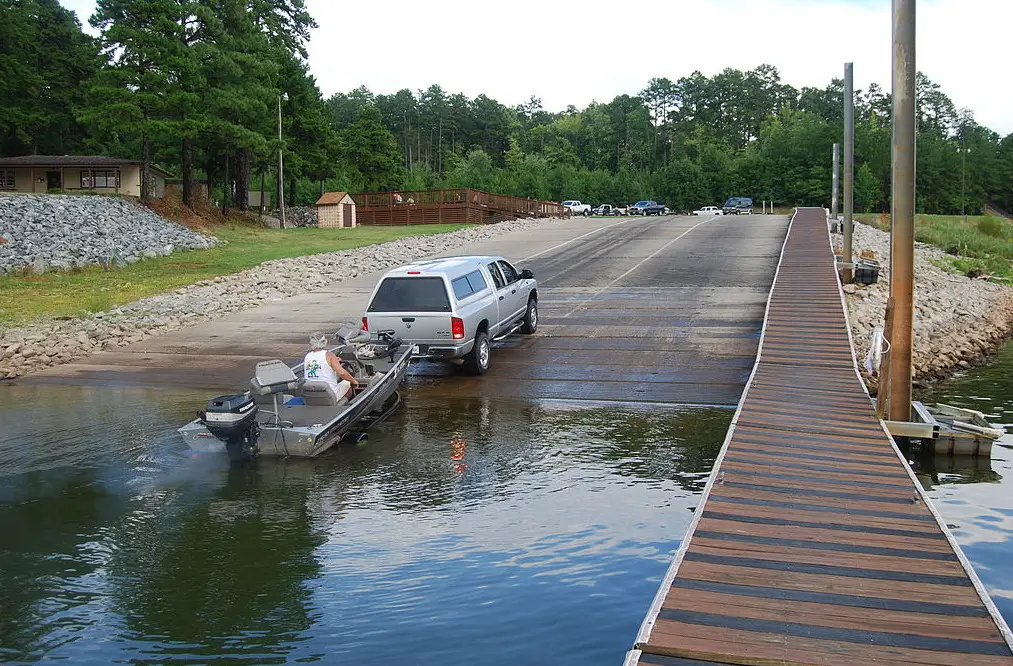
Almanor Boat Launch North of Prattville
Westwood, CA 96137
Lanes: 2
Restrooms: Yes
Showers: no
Gas: no
Tackle, groceries, snacks available: no
Fish Cleaning Station: no
Camping nearby: Yes
Canyon Dam boat ramp
Westwood, CA 96137
Lanes: 2
Restrooms: Yes
Showers: no
Gas: no
Tackle, groceries, snacks available: no
Fish Cleaning Station: no
Camping nearby: Yes
Marinas at Lake Almanor
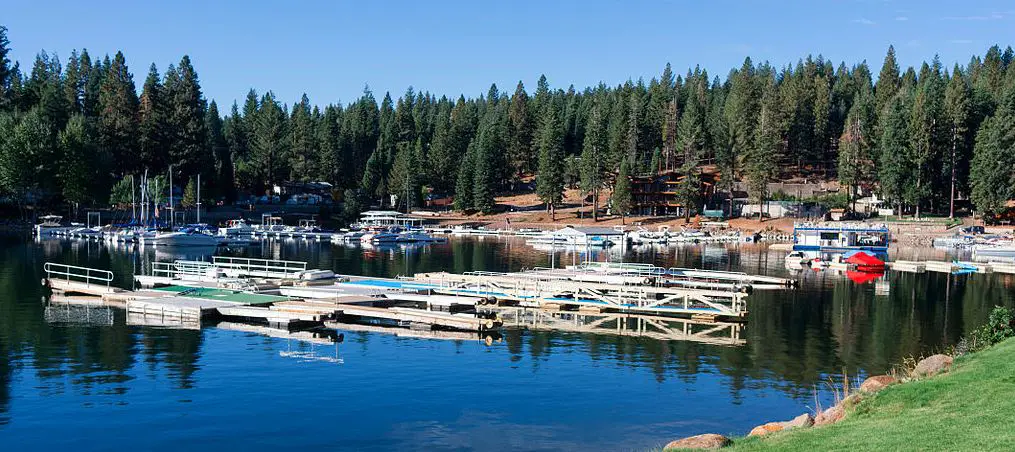
Knotty Pines Resort & Marina
430 Peninsula Dr, Lake Almanor, CA 96137
knottypine.net
(530) 596-3348
Nearby boat ramp: no
Restrooms: Yes
Showers: no
Gas: no
Groceries/snacks available: Yes
Electric: No
Camping nearby: No
Lake Cove Resort & Marina
3584 CA-147, Westwood, CA 96137
lakecoveresort.net
(530) 284-7697
Nearby boat ramp: no
Restrooms: Yes
Showers: no
Gas: no
Groceries/snacks available: Yes
Electric: No
Camping nearby: No
Plumas Pines Marina
3000 Almanor Dr W, Canyondam, CA 95923
plumaspinesresort.com
(530) 375-0059
Nearby boat ramp: Yes
Restrooms: Yes
Showers: no
Gas: Yes
Groceries/snacks available: Yes
Electric: No
Camping nearby: No
Plumas Pines Resort & Bar
3000 Almanor Dr W, Canyondam, CA 95923
plumaspinesresort.com
(530) 259-4343
Nearby boat ramp: Yes
Restrooms: Yes
Showers: no
Gas: Yes
Groceries/snacks available: Yes
Electric: No
Camping nearby: No
Tackle Shops Near Lake Almanor
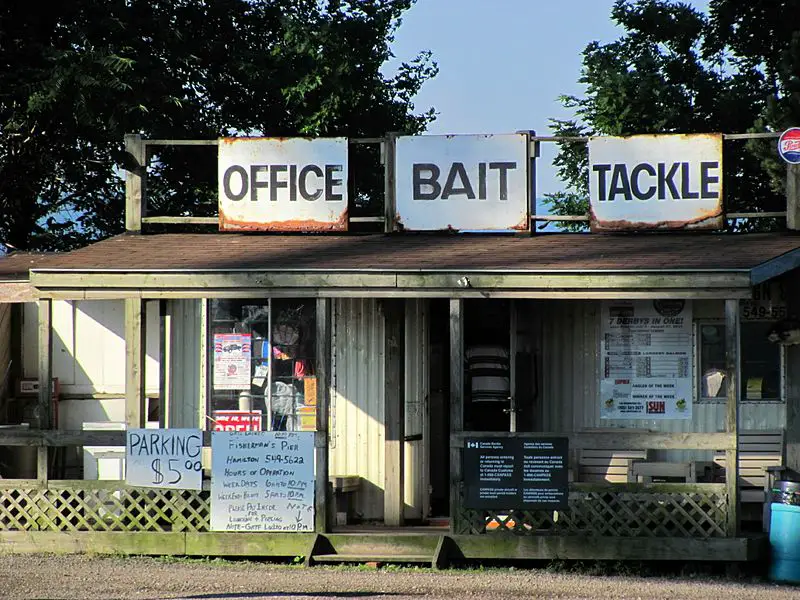
Sierra’s Fly & Tackle in Chester
212 Main St, Chester, CA 96020
sierrasflyandtackle.com
Ayoob’s Intermountain Hardware
201 Main St, Chester, CA 96020
imhardwaresupply.com
(530) 258-2611
Sierra’s Fly & Tackle @ the Branch
3820 Plumas County A13, Lake Almanor, CA 96137
sierrasflyandtackle.com
(530) 596-3820
Fish First Fly Shop! (no bait or crickets!)
766 Mangrove Ave, Chico, CA 95926
fishfirst.com
(530) 343-8300
Sierra Stream & Mountain
847 W 5th St, Chico, CA 95928
tie-fast.com
(530) 345-4261
North Valley Tackle And Pro Shop
Oroville, CA 95965
(530) 712-9356
The Elegant Iris & Men’s Den
618 Main St, Susanville, CA 96130
(530) 252-4747
Tackle Shop
471-800 Johnstonville Dr, Susanville, CA 96130
Camping Near Lake Almanor
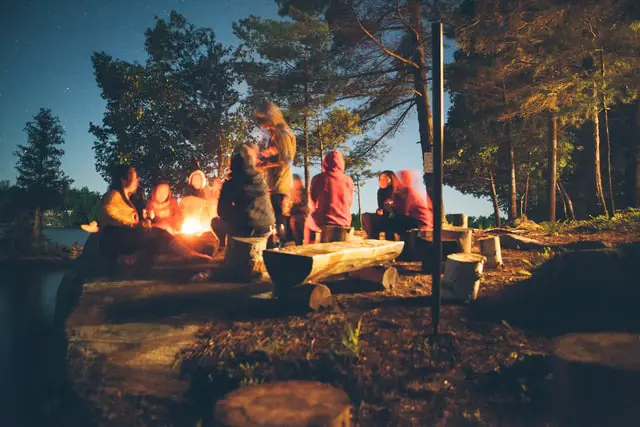
North Shore Campground
541 Catfish Beach Rd, Chester, CA 96020
northshorecampground.com
(530) 258-3376
Sites – # total.
- RV – 94 partial hook up
- Standard tent sites – 34
- Cabins available
Dump station available: Yes
Showers available: Yes
Boat launch nearby: Yes
Fish cleaning station available: No
Low season: October – March
High season: April – September
Pets welcome: Yes
Campground map – click here
Reservations – click here
Almanor Campgrounds
Canyondam, CA 95923
recreation.gov – link
(530) 258-2141
Sites – 117 total.
- RV sites available
- Standard tent sites available
Dump station available: Yes
Showers available: no
Boat launch nearby: Yes
Fish cleaning station available: No
Low season: October – March
High season: April – September
Pets welcome: Yes
Campground map – click here
Reservations – click here
Mountain View Campground
Canyondam, CA 95923
Sites – # total.
- RV sites available
- Standard tent sites available
Dump station available: Yes
Showers available: no
Boat launch nearby: Yes
Fish cleaning station available: No
Low season: October – March
High season: April – September
Pets welcome: Yes
Campground map – click here
Reservations – click here
Rocky Point Campground
Westwood, CA 96137
(530) 284-1785
Sites – 109 total.
- RV sites available
- Standard tent sites available
Dump station available: Yes
Showers available: no
Fish cleaning station available: no
Low season: October – March
High season: April – September
Pets welcome: Yes
Campground map – click here
Reservations – click here
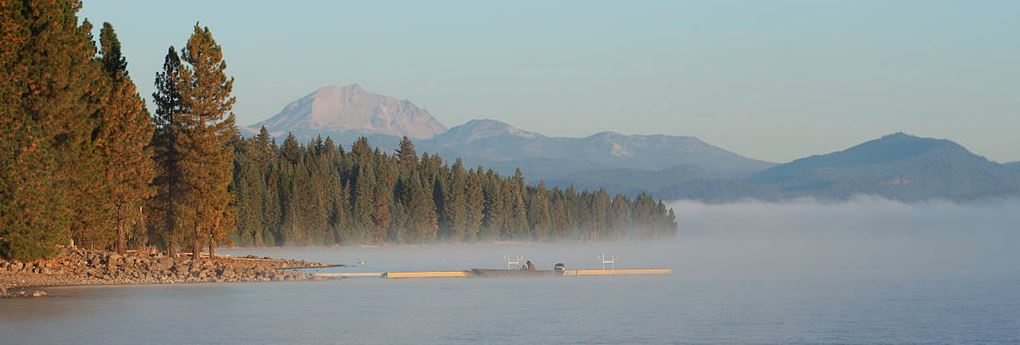
In Summary...
As you now can see Lake Almanor fishing can be tough at times, but it’s not impossible and with the help of the Lake Almanor Fishing Report… It definitely helps you get started on the right foot quickly and easily, so you can avoid wasting hours wondering where and how to get started.
Did You Get All This?
As fellow fisherman and content creator I thrive on helping others… I feel like I can do the most good by helping others… And frankly… I would feel like I did something wrong if you didn’t walk away feeling a little better about this lake.
I truly want to over deliver for you…
So Let Me Ask You Another Question…
After reading this helpful report:
- Can you see how this could change the way you would fish this lake?… To make it easier, faster… and… with less headache, less frustration?
- If nothing else, do you now have a better sense of where you can get started, even if you have have been here?
- Do you feel that you have a good grasp of what species to expect in this lake?
- Do you have a good understanding what baits are needed to catch each of the different species of fish?
- Earlier we came up with some helpful spots to catch more fish, can you see yourself considering any one of those spots? Which ones are you the most excited about implementing when you get to the lake?
- Is it fair to say that using these spots would give you a significant advantage over someone else who’s fishing this lake?
I Need To Ask A Favor From You And It’s Not Going To Cost You A Single Dime…
If you have gotten anything out of this free report; whether its knowing where to get started, what kinds of fish are in this lake, what baits to use, where to launch your boat, where to buy a frosty beverage, where to camp, and other things to do when you’re at this lake…
Then I need you to do something that is going to help your fellow angler…
And that is share this report. Please share it to as many people as you can. It’s free to you and it really helps me out as a creator.
Lastly… thank you for spending your time reading through this report and I hope you have a luck on the water.
THIS IS WHERE YOU CAN HELP ME THE MOST: There’s a lot of information about this subject you have found helpful, and I’m sure you’ll be able to put some of the knowledge bombs to use. But sharing this report helps drive traffic which in turn helps me at absolutely no cost to you. I love creating reports like this for you, and you like reading these types of reports please share this with your friends, family, and fellow anglers.
Click on your favorite social media buttons to share this page now!
Other California Related Fishing Articles
- Bass Lake Fishing Report
- Clear Lake Fishing Report
- Castaic Lake Fishing Report
- California Delta Fishing Report
- Diamond Valley Lake Fishing Report
- Don Pedro Reservoir Fishing Report
- Eagle Lake Fishing Report
- El Capitan Reservoir Fishing Report
- Lake Berryessa Fishing Report
- Big Bear Lake Fishing Report
- Folsom Lake Fishing Report
- Irvine Lake Fishing Report
- Lake Almanor Fishing Report
- Lake Camanche Fishing Report
- Lake Isabella Fishing Report
- Lake Havasu Fishing Report
- Lake McClure Fishing Report
- Lake Oroville Fishing Report
- Lake Perris Fishing Report
- Lake Piru Fishing Report
- Lake Skinner Fishing Report
- Lake Tahoe Fishing Report
- Los Banos Reservoir Fishing Report
- New Hogan Lake Fishing Report
- New Melones Lake Fishing Report
- O’Neill Forebay Fishing Report
- Pardee Lake Fishing Report
- Pyramid Lake Fishing Report
- San Luis Reservoir Fishing Report
- San Vicente Reservoir Fishing Report
- Shasta Lake Fishing Report
- Silverwood Lake Fishing Report
- Trinity Lake Fishing Report
- Whiskeytown Lake Fishing Report
More articles just for you...
Funny Fishing Rules, Laws, and Regulations 2025
Crazy Fishing Laws That Will Blow Your Mind! #7 is INSANE! Strange Fishing Regulations and Laws As silly as hook and rod limits may seem,
EXPOSED! How To Use A Spinnerbait The Right Way for 2025
Are You Wondering How To Use A Spinnerbait? Or How To Work A Spinnerbait Over Grass, Logs, or Points? Well, All These Questions Are Answered
EXPOSED! Best Crankbait Colors for 2025 [Which to Buy & Avoid]
What color crankbait to use? Crankbait Color Chart I just love going into a Bass Pro Shops store and just staring at all the walls
Best Underwater Dock Lights For Fishing – 2025 Buyers Guide
Night Dock Light Fishing For Beginners Dear fellow angler, Does this sound like you? You’re someone who loves fishing but just wants to escape the
15 Best Deep Diving Crankbaits [2025 Buyers Guide – Which to Buy & Avoid]
A Complete Buyer’s Blueprint On The Best Deep Diving Crankbaits for Bass, Walleye, or Striped Bass On The Market Today Fishing deep diving crankbaits can

